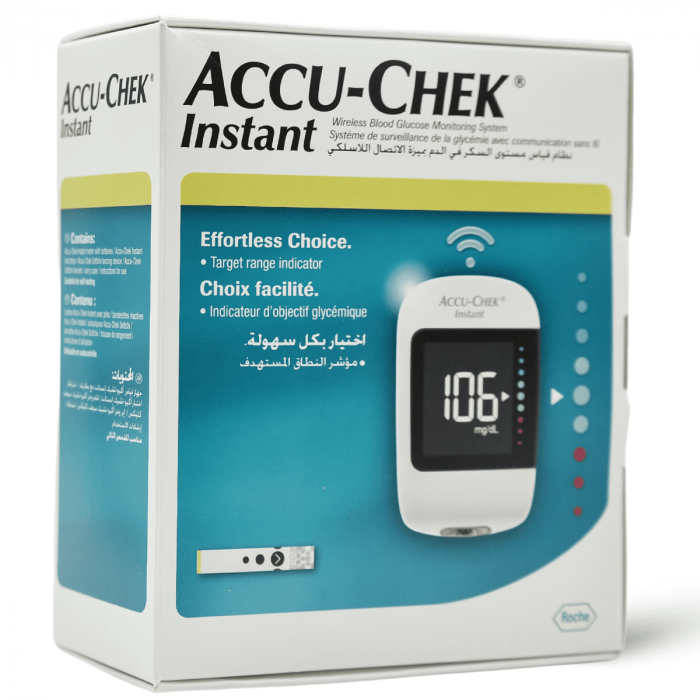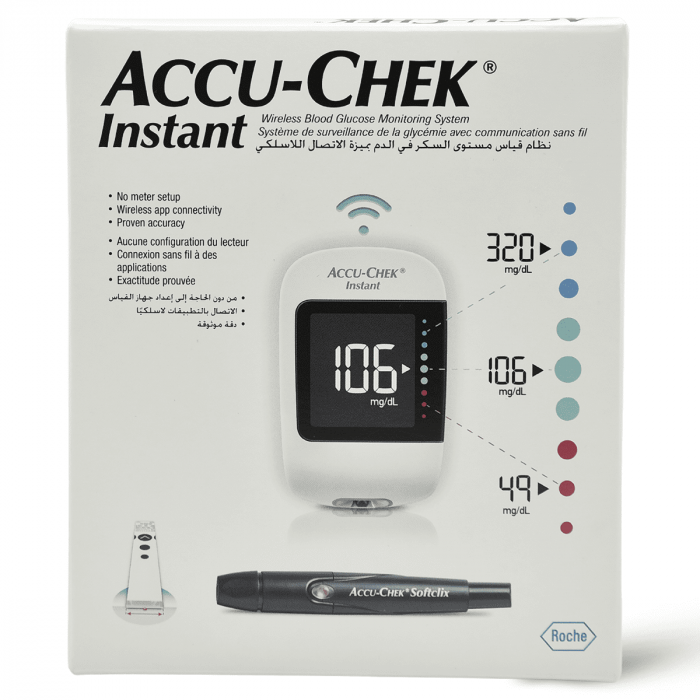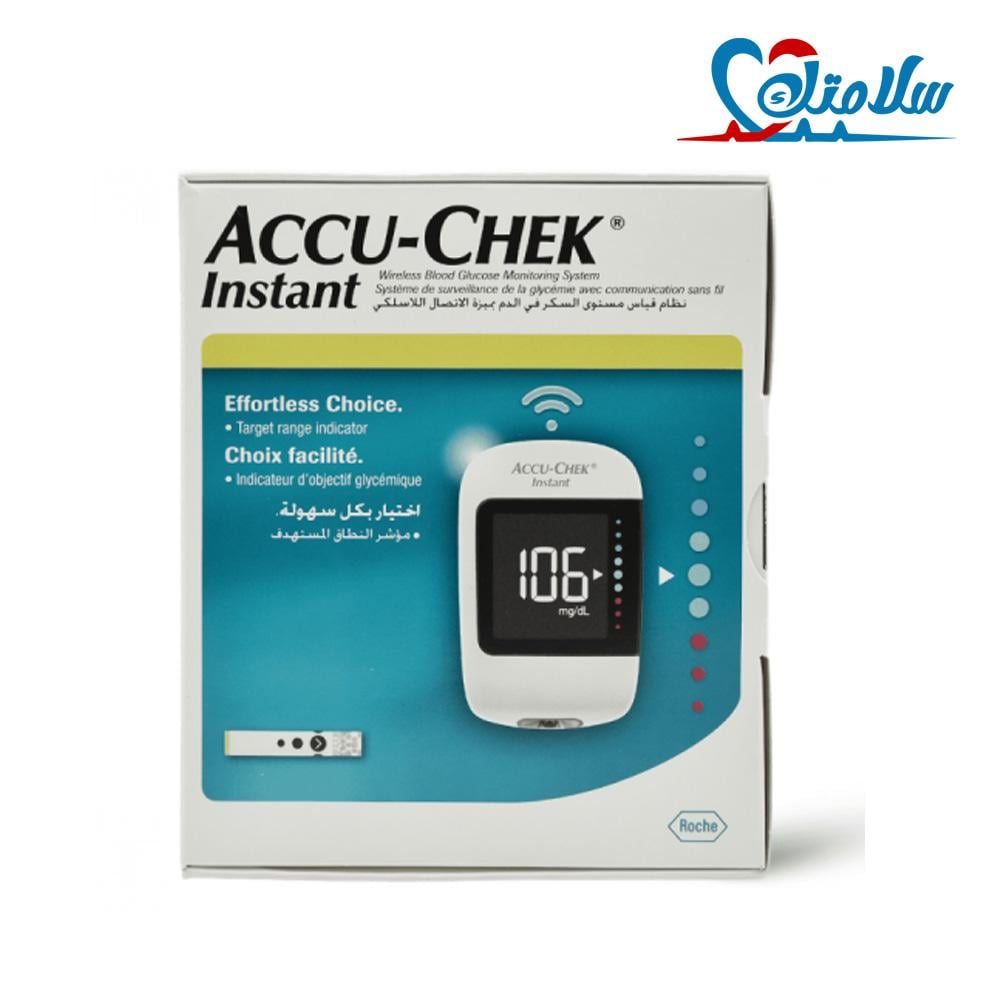product name
- Accu-Chek Instant Blood Glucose Monitor - 1 Device
Belongs to
- Medical devices - blood glucose measuring devices
the use
- This easy-to-use blood glucose monitor provides accurate and repeatable results
Product features
- Large, easy-to-read screen.
- 500 test results are stored in memory.
- The result is given in 4 seconds.
- Changing the battery does not mean losing your date and time settings.
Instructions for use
- Wash and dry your hands well. Sometimes warming your finger can help increase blood flow.
- Insert the test strip into your meter.
- Use the needle to prick the tip of your finger.
- Gently press and/or massage your fingertip until a circular drop of blood forms at your fingertip.
- Align the test strip with the drop of blood and then gently touch the strip to the edge of the blood drop
- The meter will show your blood sugar level on the screen within seconds
- Remove the used tape from its edges, and use alcohol swabs to clean your finger
Security
- 3 years warranty for repair or replacement from the same pharmacy branch from which it was purchased.
What is diabetes?
- It is a chronic disease and if you suffer from diabetes, this means that either you do not have enough insulin or your insulin is not working properly, which leads to high blood sugar levels.
- Types of diabetes:
- Type 1, in which the pancreas does not produce any insulin at all.
- Type 2, in which the pancreas produces insufficient insulin, or the insulin stops working properly.
- Gestational diabetes is a temporary condition in which a woman's insulin becomes less effective during pregnancy.
- Common symptoms of diabetes:
- Frequent urination.
- Extreme thirst.
- Extreme hunger.
- Tired.
- Lack of interest and loss of concentration.
- Numbness of hands and feet.
- Slow wound healing.
Useful tips for diabetics
- All carbohydrates affect blood glucose levels, so it is important to know which foods contain carbohydrates. Choose healthy foods that contain carbohydrates and be aware of the serving size (amount of carbohydrates) required
- Reduce your salt intake. Eating too much salt can increase your risk of high blood pressure, which in turn increases your risk of heart disease and stroke. And when you have diabetes, you're actually more susceptible to all of these conditions.
- Eat more fruits and vegetables. This can help you get the vitamins, minerals, and fiber your body needs daily to keep you healthy.
- You can always try low-calorie or no-calorie sweeteners (also known as artificial sweeteners) to help you cut down on sugar for example Steviana, Diet Sugar or Tropicana, Diet Sugar
- Don't forget to keep moving. Being more active helps you control your blood sugar level
- Remember to measure your blood glucose level continuously using home blood glucose meters
- If you experience symptoms of hypoglycemia such as weakness, dizziness, increased sweating, rapid heartbeat, vision disturbances or difficulty concentrating, eating or drinking something containing sugar will usually help.
Normal levels of blood sugar levels
- Random blood sugar test: A blood sample will be taken at a random time. No matter when you last ate, a blood sugar level of 200 milligrams per deciliter (mg/dL) or higher indicates diabetes. A blood sugar level of less than 140 mg/dL is considered normal, and a reading between 140 and 199 mg/dL indicates the risk of diabetes.
- Fasting blood sugar test. A blood sample will be taken after fasting overnight. A fasting blood sugar level of less than 100 mg/dL is normal. A fasting blood sugar level of 100 to 125 mg/dL is considered prediabetes. If the rate is 126 mg/dL or higher on two separate tests, you may have diabetes.
- Oral glucose tolerance test: For this test, you fast overnight, and your fasting blood sugar level is measured. You then drink a sugary liquid, and your blood sugar levels are tested periodically for the next two hours






